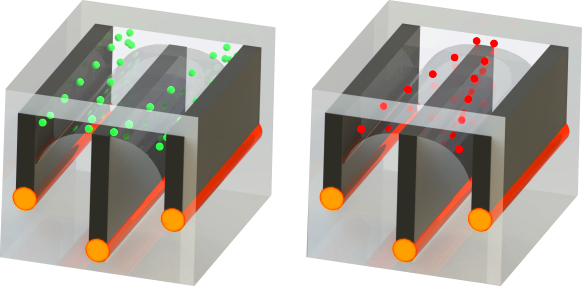
, , , , , , and
Abstract:
Traditional fabrication techniques for microfluidic devices utilize a planar chip format that possesses limited control over the geometry of and materials placement around microchannel cross-sections. This imposes restrictions on the design of flow fields and external forces (electric, magnetic, piezoelectric, etc.) that can be imposed onto fluids and particles. Here we report a method of fabricating microfluidic channels with complex cross-sections. A scaled-up version of a microchannel is dimensionally reduced through a thermal drawing process, enabling the fabrication of meters-long microfluidic fibers with nonrectangular cross-sectional shapes, such as crosses, five-pointed stars, and crescents. In addition, by codrawing compatible materials, conductive domains can be integrated at arbitrary locations along channel walls. We validate this technology by studying unexplored regimes in hydrodynamic flow and by designing a high-throughput cell separation device. By enabling these degrees of freedom in microfluidic device design, fiber microfluidics provides a method to create microchannel designs that are inaccessible using planar techniques.
